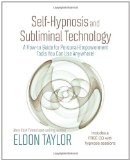Origin of Hypnosis
Hypnosis has always been an integral part of healing rituals the world over.
Performing Hypnosis
Hypnosis is performed by a therapist who directs the concentration of the patient to his "inner world" thereby activating his subconscious. Hypnosis brings the patient into an altered state of consciousness known as a trance. His thoughts, feelings, imagination and sensation are completely concentrated on psychological experiences. The therapist begins the hypnosis by asking the patient to concentrate his attention on a small object. The trance-state is induced by the constant and calm voice of the therapist.
Effect of Hypnosis
Hypnosis is a state of deep relaxation which is similar to a day-dream. An EEG used during hypnosis shows brain waves with an alpha-rhythm, i.e. in an awake-state and deeply relaxed - not sleeping! The hypnotised person becomes oblivious to his/her surroundings and focuses the concentration inwards.
Suggestibility
During hypnosis, a therapist speaks healing words which flow into the subconscious of the patient (suggestibility). This is used to help the patient replace pathological behavioural patterns with new ones.
Clinical hypnosis can be helpful especially when treating psychological and physical ailments (psychosomatic disorders).
Self-hypnosis
Physical and mental relaxation can be achieved by autosuggestion. The most well known form of self-hypnosis is autogenous training.
top 
|
Application of Hypnosis
Hypnosis can be effectively used for the following:
- Fear, stuttering, phobias, insecurities, panic attacks and relationship problems.
- Chronic pain and as a replacement for anaesthesia.
- Addictions such as alcoholism, smoking, drug abuse and gambling.
- Negative feelings such as depression, listlessness, aggressiveness and difficulty in concentrating.
- Stress, headaches, migraines, insomnia, flushing, impotence, stomach irritability and weight loss.
Nowadays hypnosis is considered as a medically and psychologically established form of therapy. The clinical effect of hypnosis is well-documented. However, the physiological mechanisms are still not well understood.
top 

Instant Self-Hypnosis: How to Hypnotize Yourself With Your Eyes Open

Self-Hypnosis And Subliminal Technology: A How-to Guide for Personal-Empowerment Tools You Can Use Anywhere!, Eldon Taylor
|

